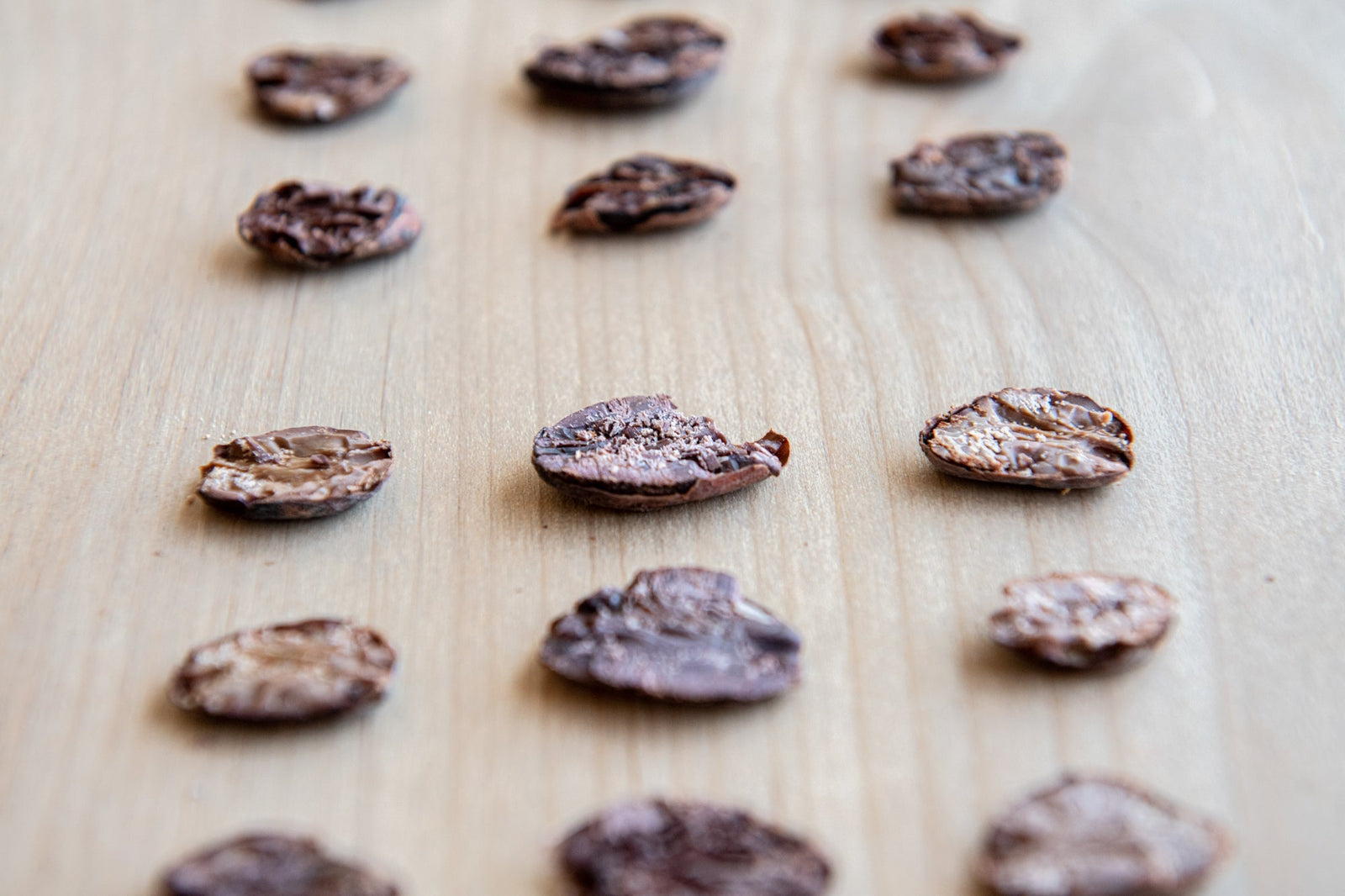We’ve been getting a ton of questions lately about cadmium and lead in chocolate, so I figured it was time to share what I’ve learned.
Quick note before we dive in: I’m not a doctor (just a chocolate maker!), so this isn’t medical advice. It’s the result of way too much time reading, researching, and obsessing over cadmium and lead—especially as they relate to dark chocolate.
What Are Cadmium and Lead?
Both are naturally occurring heavy metals that can sneak into our food—and our bodies—in a few different ways.
Let’s Talk About Lead—Is It Bad for Me?
Absolutely. Lead exposure has been a huge public health issue for decades. It’s linked to neurological issues like learning disabilities, seizures, and even lower IQ levels.
How Much Lead Is "Safe" to Eat?
California’s Prop 65 guideline sets a No Significant Risk Level (NSRL) of 15 µg/day for lead intake. That might sound like a lot, but it’s a super cautious threshold. The idea is that even if you consumed that much lead every day for 70 years, your increased cancer risk would be less than one in 100,000. At least that's how the NSRL is defined.
What About Lead in Chocolate?
For us at Spinnaker Chocolate, we will always aim to have zero or very very close to zero levels of lead in our chocolate and here’s why.
Lead in chocolate isn’t naturally occurring. It comes from improper handling of the cacao – typically during the drying process after fermentation. It’s almost entirely avoidable. So we’ll always do our best to avoid it at all costs because we can and we should.
Now for the Tricky One—Cadmium
Cacao trees naturally absorb cadmium from the soil, especially volcanic soils, which can be naturally high in cadmium. These soils are common in cacao-producing regions like parts of Latin America. The plant absorbs cadmium through its roots, which then accumulates in the beans.
Is Cadmium Bad for Me?
Probably. The science here is less clear. We know inhaling cadmium is dangerous (it’s a carcinogen), but when it comes to eating cadmium, the research is murkier. Consuming too much cadmium may harm your liver and kidneys over time but scientists aren’t certain on the amount of cadmium that is harmful.
How Much Cadmium Is Safe?
This depends on who you ask:
-
WHO: Up to 7 µg per kilogram of body weight per week.
-
EPA: 1 µg per kilogram of body weight per day.
-
California Prop 65: A much stricter 4.1 µg/day, regardless of body weight.
For a 150-pound person (about 68 kg), that means:
-
WHO/EPA: Up to 68 µg per day or 476 µg per week.
-
Prop 65: Just 4.1 µg/day.
Cadmium and Chocolate: Breaking It Down
In 2014, the nonprofit As You Sow tested hundreds of chocolate bars and found many exceeded Prop 65’s cadmium limit. They calculated the cadmium content of each by by multiplying the suggested serving size (in grams) by the chocolate’s concentration (in ppm).
Quick Refresher: What Are ppm and µg?
-
ppm (parts per million): A way to measure concentration. In chocolate, it’s how much cadmium is present per million parts of chocolate.
-
µg (micrograms): A unit of mass. One µg is one-millionth of a gram.
To convert ppm to µg, you multiply the ppm value by how much chocolate you’re eating. For example:
-
If you eat 27g of chocolate in a day and it contains 0.5 ppm of cadmium, that’s:
27 g × 0.5 ppm = 13.5µg cadmium
Why the As You Sow Tests Matter
After testing many chocolate bars against California’s Prop 65 cadmium limit of 4.1 µg/day, As You Sow found that over 20 chocolate makers exceeded the guideline. They didn’t just stop at testing—they filed legal notices against these companies, citing the excessive cadmium (and lead, though as I’ve mentioned, we avoid lead nearly entirely in our chocolate).
The result? A groundbreaking settlement with some of the biggest names in chocolate. But the most important outcome wasn’t just the legal notices—it was establishing what “allowable” levels of cadmium should look like.
Serving Size vs. Concentration
Here’s where it gets interesting (and honestly, makes a lot of sense to me). The chocolate makers argued that using serving size to measure cadmium levels is misleading.
Why? Because a serving size is just a suggestion. It’s mostly for providing nutrition information and isn’t a reliable measure of how much chocolate someone will actually eat. Some people nibble a square or two; others devour the whole bar (no judgment!). Everyone’s eating habits are different, which makes it almost impossible to calculate cadmium exposure based on serving size alone.
What Are the Industry Standards for Cadmium?
Thanks to As You Sow’s work, a settlement with major chocolate makers established interim cadmium guidelines based on concentration (measured in ppm) and not serving size:

-
Dark chocolate with high cocoa content: 0.8 ppm or lower (by EU standards).
-
For lower risk tolerance, 0.4 ppm or less (by interim As You Sow standards).
For me, personally, I base my decisions on the EU Commission guidelines since it’s an official regulation backed by (albeit limited) scientific research. The interim As You Sow numbers were meant to be just that, interim, but we’re going on 10 years from the settlement and we don’t have any newly published regulations.
Cadmium and Lead in Spinnaker Chocolate
For our chocolate here at Spinnaker, we have a double-test process. We buy cacao that has been tested previously as a raw bean and then for extra precaution, we also test individual bars straight out of our finished inventory every time we get a new crop of beans. Usually that's around six months. You can see our latest test results here:
How do I read a data report on cadmium and lead?
You’ll notice that the report is listed in milligrams per kilogram of cadmium. Mg/kg is a 1 to 1 conversion to ppm so each of those numbers is the same if it were listed in ppm.
Like we mentioned before, you should be looking for zero or close to zero lead and, depending on your risk tolerance, less than .45 mg/kg or .8 mg/kg of cadmium.

Final Thoughts
We want you to enjoy chocolate with confidence, which is why transparency is so important to us. If you have any questions—or if you think anything I’ve said here is off—please email us at support@spinnakerchocolate.com. We’ll happily chat or update the info if needed.
Thanks for reading,
Kelly Van Arsdale
Co-Founder, Spinnaker Chocolate












Leave a comment (all fields required)